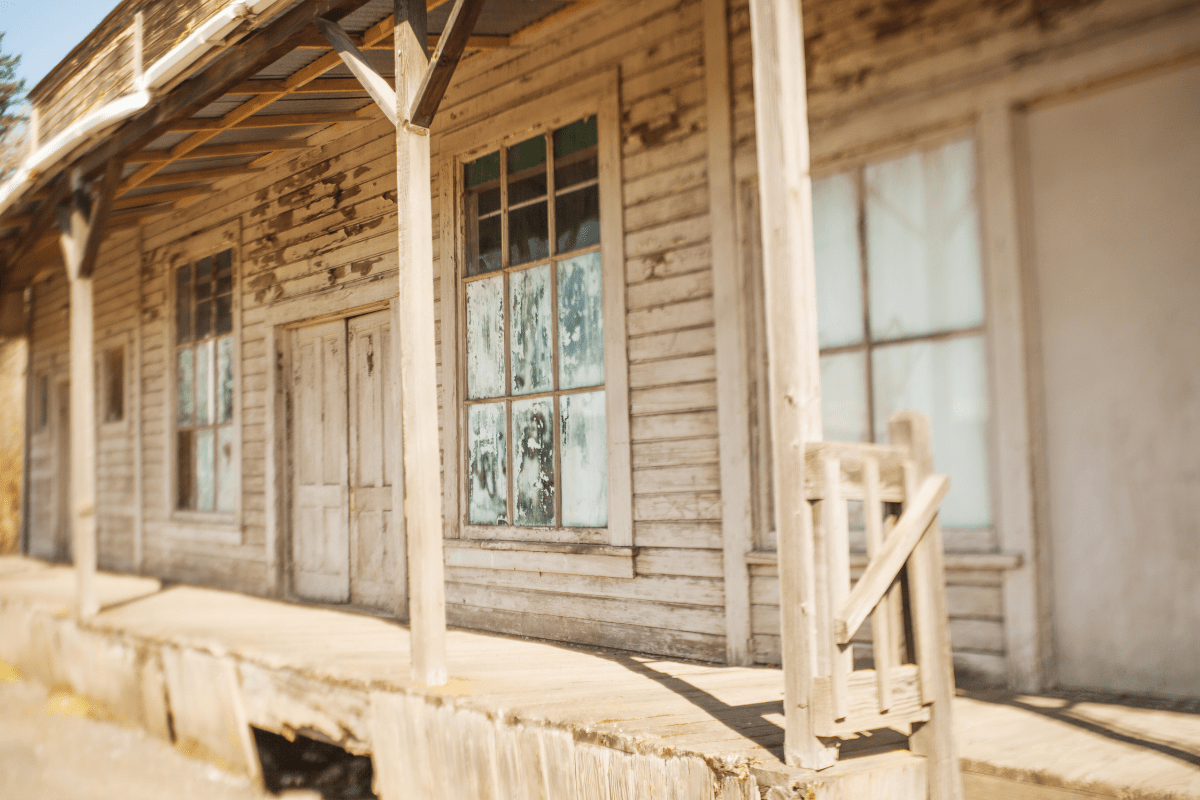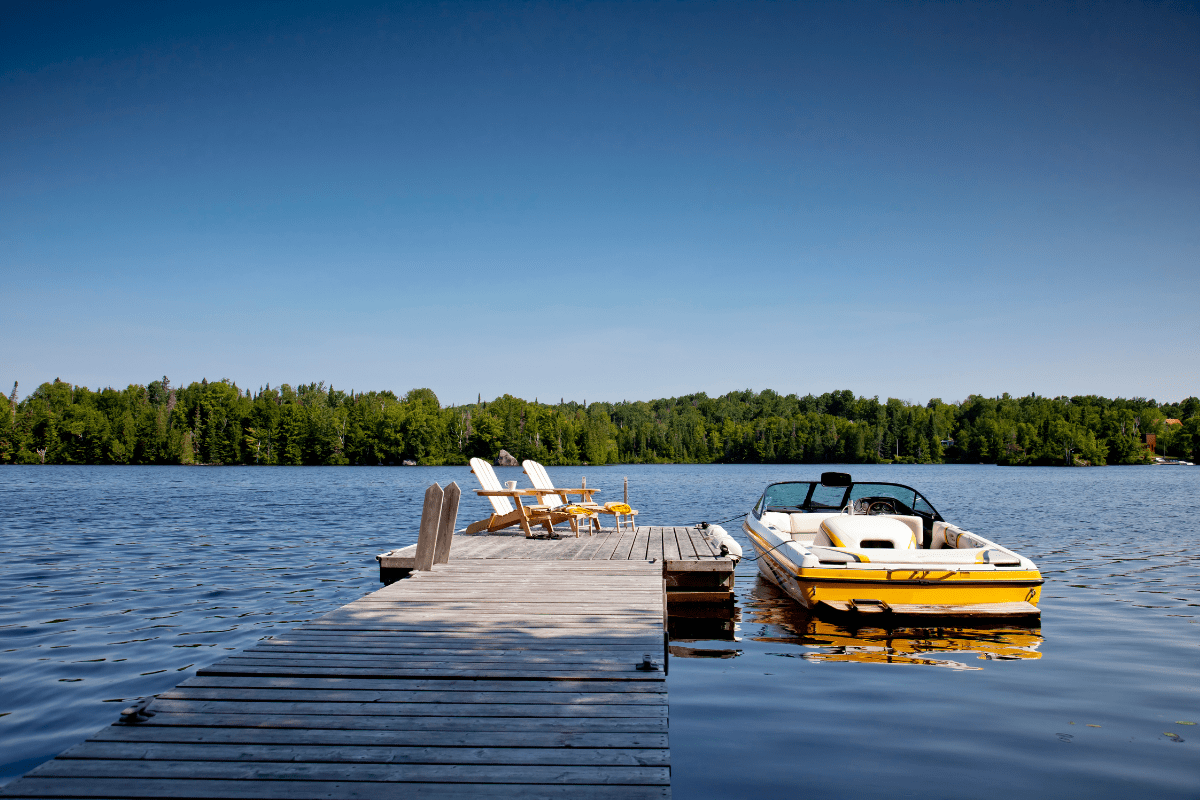Idaho's ghost towns aren't your typical tourist traps with gift shops and staged shootouts. These are real abandoned mining settlements where you can still find old dynamite boxes in collapsed sheds and century-old whiskey bottles half-buried in the dirt. Over 100 of these towns scatter across Idaho's mountains, and visiting them feels less like a history lesson and more like stumbling into a time capsule that nobody bothered to curate.
Why Idaho's ghost towns hit different
Most states have a ghost town or two, but Idaho went all-in during the mining boom.
The 1860s gold rush created instant cities that sometimes housed thousands of residents before the mines played out and everyone vanished practically overnight. What makes Idaho's ghost towns special isn't just their number… it's that many still have original buildings standing, complete with furniture inside and newspapers from the 1890s yellowing on dusty shelves. These aren't reconstructions or theme parks. They're authentic pieces of the Old West that somehow survived over a century of Idaho winters.
The state produced ridiculous amounts of precious metals during its heyday. Silver City alone pumped out over $60 million in gold and silver before the 1890s. That's 1890s dollars, mind you. Today, these preserved settlements support Idaho's billion-dollar heritage tourism industry while giving visitors an unfiltered look at frontier life.
The heavy hitters: Ghost towns you've probably heard about
Silver City stands above the rest (literally)
Let's start with the celebrity of Idaho ghost towns. Silver City sits at 6,179 feet in the Owyhee Mountains, and getting there requires commitment.
The town exploded into existence on March 10, 1863, after prospectors found silver at War Eagle Mountain. By the 1880s, 2,500 people called Silver City home. This wasn't some muddy mining camp either. The town had 75 businesses including six general stores, eight saloons, and Idaho Territory's first daily newspaper. They even got electric and telephone service before many established cities, because nothing says "middle of nowhere" like having electricity before Seattle.
Today, approximately 70 original buildings still stand, many owned by descendants of the original miners. Yes, actual descendants who inherited ghost town property from their great-great-grandparents. The Idaho Hotel, restored in 1972, still offers summer lodging if you want to sleep where miners once drowned their sorrows in whiskey. The town's last year-round resident, Willie Hawes, served as mayor, police chief, fire chief, and postman simultaneously until 1943. Talk about wearing multiple hats.
Getting to Silver City involves a 23-mile dirt road from Murphy that climbs 4,000 feet. The road closes from November through May unless you're into extreme snowmobiling. You'll want a high-clearance vehicle, though 4WD isn't essential if you're careful and lucky. Most buildings are private property with "No Trespassing" signs, so resist the urge to poke around inside that fascinating-looking saloon.
Land of the Yankee Fork State Park brings organization to chaos
If Silver City is the wild child of ghost towns, the Land of the Yankee Fork State Park is the responsible sibling who got their act together.
The park includes three distinct ghost towns: Bonanza, Custer, and Bayhorse. Each tells a different story about mining life, and unlike many ghost towns, these actually have visitor centers and maintained trails. Revolutionary concept, right?
Bonanza popped up in 1877 after Charles Franklin found gold. The town peaked at over 600 residents and featured surprisingly civilized amenities like tree-lined streets, a croquet field, and a baseball diamond. Because nothing says "rough mining town" like a nice game of croquet after a hard day in the mines. The Yankee Fork Herald newspaper kept everyone informed until two fires (1889 and 1897) basically deleted the town from existence.
Custer, established in 1879, offers the best-preserved buildings in the Yankee Fork area. The town peaked at 300 residents in the 1880s and maintained strict racial segregation, forcing Chinese miners to establish their own Chinatown despite doing much of the actual mining work. Today you can tour the restored schoolhouse museum and saloon. They celebrate Custer Days the second Saturday in July, which beats celebrating "That Time Everyone Abandoned Town Day."
Bayhorse might be the sleeper hit of the bunch. This town ran from 1877 to 1968, making it one of Idaho's longest-running silver producers. The site cranked out $10 million in minerals, including 6.3 million ounces of silver and 37 million pounds of lead. The 1882 stamp mill still towers over the site like a steampunk fever dream. The National Registry of Historic Places noted that "few ghost towns in the west compare with Bayhorse for unspoiled charm," which is a fancy way of saying it looks exactly like everyone just walked away one day.
Burke: When geography goes wrong
Burke wins the award for "Most Ridiculous Town Layout in Mining History."
Picture this: A canyon only 300 feet wide. Now put a town in it. Now run a railroad through the main street. Now, because that's not crazy enough, run the railroad through the lobby of the hotel. The Tiger Hotel's trains-through-the-lobby situation meant you could literally check in while a locomotive passed through reception. The three-story hotel had 150 rooms and fed 1,200 people daily, presumably while dodging train schedules.
Founded in 1887, Burke peaked around 1910 with 1,400 residents crammed into that narrow canyon like sardines with mining equipment. The town endured violent labor wars in 1892 and 1899, including an incident where over 1,000 miners hijacked a train loaded with dynamite. Because subtle protest wasn't really their thing.
Natural disasters loved Burke too. A 1910 avalanche killed 20 residents. The Great Fire of 1910 threatened everything. A 1923 fire destroyed most surface buildings. The Hecla Star Mine kept operating until 1991, but now the EPA is conducting cleanup from 2022 to 2026 due to heavy metals contamination. So maybe admire this one from a distance.
Hidden gems worth the extra effort
Not every ghost town needs to be famous to be worth visiting. Some of Idaho's lesser-known abandoned settlements offer better experiences than the popular spots, minus the crowds and plus the feeling that you're discovering something special.
Warren welcomes everyone (eventually)
Warren stands out for being surprisingly progressive for an 1860s mining town. While most Western towns treated Chinese miners terribly, Warren actually welcomed them.
From 1870 to 1900, Chinese miners outnumbered others three to one. The 1880 census recorded 393 Chinese residents and 73 white residents. Chinese miners established businesses, reworked old claims, and basically kept the town alive when others gave up. During the 1930s Depression, Warren became Idaho's leading gold producer with three dredges operating 24 hours daily. Nothing like economic collapse to make gold mining profitable again.
Today, 12 to 16 year-round residents maintain this remote community. In winter, you can only reach Warren by snowmobile or airplane, which definitely keeps out the casual tourists. The isolation has preserved Warren's authenticity better than any historical society could.
Rocky Bar almost became important
Rocky Bar had ambitions. Founded in December 1863, it housed over 2,500 residents and served as county seat for not one but two counties (Alturas and Elmore). The town was even considered as a possible territorial capital, which would have changed Idaho's history significantly.
Instead, Rocky Bar now has four year-round residents who probably appreciate the peace and quiet. The town cemetery contains the grave of acting territorial governor Clinton DeWitt Smith, making it more politically significant dead than some towns are alive.
Gilmore produced millions and lead poisoning
Gilmore demonstrates why you should research before visiting. The town produced nearly $486 million in silver at today's values between the 1880s and 1929. The Gilmore & Pittsburgh Railroad, nicknamed the "Get Off and Push" Railroad, connected it to Montana until a power plant explosion in 1929 ended the party.
Here's the catch: Idaho DEQ found lead levels 50 times higher than safe residential standards. So maybe just look at photos of this one online.
When to visit (and when to absolutely not visit)
Timing your ghost town adventure matters more than you'd think.
The best window runs from May through October. Most sites become completely inaccessible from November through May unless you own a snowmobile and have a death wish. Summer offers ranger programs and guided tours at developed sites like Custer and Bayhorse. Fall provides cooler temperatures, fewer tourists, and that perfect "abandoned in autumn" photography lighting.
Here's what different seasons really mean for ghost town exploring:
- May-June: Roads finally clear, wildflowers bloom
- July-August: Peak season, all sites accessible, hot and crowded
- September-October: Best weather, fewer people, golden hour lasts forever
- November-April: Don't even think about it
Getting there without getting stuck
Access roads to Idaho's ghost towns range from "slightly sketchy" to "are you insane?"
Silver City requires that famous 23-mile dirt road that climbs 4,000 feet with hairpin turns that'll make your passengers question your friendship. The Custer Motorway spans 46 miles of dirt that's not suitable for low-clearance vehicles, trailers, or people who value their suspension systems. Warren becomes winter's prisoner, accessible only by snowmobile or airplane when snow blocks the roads.
Essential vehicle considerations:
- High clearance (mandatory for most sites)
- 4WD (helpful but not always required)
- Spare tire (actually two wouldn't hurt)
- Full gas tank (no services for miles)
- Recovery gear (tow strap, shovel, boards)
- Paper maps (GPS gets confused out here)
- Emergency supplies (water, food, blanket)
- Common sense (surprisingly rare)
Safety reality check
Let's talk about why ghost towns are actually dangerous, not Instagram-dangerous.
Idaho has over 9,000 contaminated mining sites statewide. Open mine shafts can drop hundreds of feet with openings hidden by brush or rotted boards. Old dynamite becomes increasingly unstable with age and can explode from vibration or temperature changes. Yes, really. That's not even covering toxic gases like methane and carbon monoxide that pool in old mines.
Lead contamination is everywhere in these towns. The soil, the dust on surfaces, even the paint in buildings contains levels that would make an EPA inspector weep. Children are especially vulnerable, so maybe leave the kids with grandma for this adventure.
Structures that survived 100+ years of Idaho weather aren't exactly stable. Floors collapse, ceilings fall, and that Instagram-worthy staircase might deposit you in the basement unexpectedly. Most sites have zero cell coverage and the nearest hospital is often over an hour away. That's assuming you can even get back to your car.
Legal stuff that actually matters
Idaho strengthened its trespassing laws in 2018, and they're not messing around anymore.
Penalties start at $300 for first offenses and escalate to $1,000 plus six months in jail. Many buildings in ghost towns, especially Silver City, remain private property with clear "No Trespassing" signs. That picturesque cabin isn't abandoned… someone's family owns it and they're tired of tourists treating it like a playground.
Removing anything from a ghost town violates federal and state antiquities laws. That rusty horseshoe or old bottle might seem like a harmless souvenir, but it's actually historical theft. The Land of the Yankee Fork State Park charges $7 per vehicle for day use, which is reasonable considering they actually maintain the sites.
Organizations keeping these places alive (sort of)
The Idaho Heritage Trust leads preservation efforts as the state's primary nonprofit preservation organization. In 2025 alone, they funded 27 projects across 15 counties totaling $278,616. Their work at Chesterfield, a Mormon pioneer ghost town, shows how community involvement can preserve these sites. Hundreds of volunteers restore the 120-acre townsite each summer, proving that ghost towns don't have to stay dead.
The Idaho State Historical Society, established in 1881, provides additional support through multiple programs. Their Community Enhancement Grants have invested over $515,000 statewide since 2008. The Certified Local Government Program distributes approximately $100,000 annually for historic preservation projects.
Historian Tom Blanchard notes that "Bayhorse was touted to be one of the richest silver discoveries in the Idaho territory in the 1880s." The National Registry evaluation states that "few ghost towns in the west compare with Bayhorse for unspoiled charm," though preservation specialists acknowledge that Idaho's growing population is "diminishing the likelihood" of discovering intact artifacts.
Your ghost town starter pack
Before you head out to explore Idaho's abandoned settlements, you'll need proper gear and realistic expectations.
Essential equipment includes:
- First aid kit (seriously)
- Water (1 gallon per person minimum)
- GPS device (phone won't work)
- Emergency beacon (SPOT or similar)
- Sturdy hiking boots (not sneakers)
- Headlamp (for peering into buildings safely)
- Camera (obviously)
- Respect for history (can't buy this one)
Best practices for responsible exploring:
- Travel in small groups (6 or fewer)
- Tell someone your route and return time
- Stay on established trails
- Pack out ALL trash
- Don't touch or move artifacts
- Respect photography restrictions
- Keep noise levels down
- Leave everything as you found it
Making it happen: Your ghost town action plan
Start with the developed sites like Bayhorse and Custer for your first ghost town experience. These offer ranger-guided tours, maintained trails, and actual bathrooms. Graduate to Silver City once you're comfortable with rough roads and limited facilities. Save the remote sites like Warren for when you've got proper experience and equipment.
The Idaho Hotel in Silver City offers summer lodging if you want the full ghost town sleepover experience. Book early because ghost town hotels don't exactly have unlimited rooms. The Land of the Yankee Fork interpretive center provides excellent context before exploring the actual towns. Custer Days on the second Saturday in July offers the most activities and guided tours.
Check the Visit Idaho ghost towns page for current conditions and seasonal closures. The Idaho Transportation Department provides road conditions that could save you from getting stranded. The Western Mining History website offers detailed histories of individual towns if you want to go deep on research before visiting.
The real reason to visit Idaho's ghost towns
These abandoned settlements aren't just Instagram backdrops or history lessons. They're tangible connections to the insane ambition and frequent failure that built the American West.
Standing in Silver City's empty streets or wandering through Bayhorse's collapsed buildings, you can almost hear the echoes of thousands of people who bet everything on finding fortune in Idaho's mountains. Most lost that bet. But their abandoned towns remain, weathered and authentic, waiting for visitors willing to venture beyond the interstate to discover what the Wild West actually looked like when the party ended.
Just remember to respect the sites, follow the safety guidelines, and maybe check your car insurance before tackling those access roads. These towns survived over a century of Idaho winters… they can wait for you to visit responsibly.





